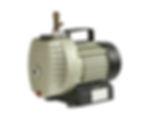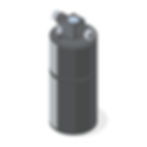Servicing Type 1 HVAC Equipment
- SkillCat Team
- Sep 16, 2025
- 8 min read
EPA Type 1 Chapter 3
Service Equipment
In this module, we will take a look at the requirements for equipment we use in servicing Type I appliances. We will discuss recovery devices, process tubes, vacuum pumps, and charging cylinders.
Recovery Device
Recovery devices are used to remove refrigerant from an appliance and store it in a recovery cylinder. They do the work of removing the refrigerant from an appliance, but they are not used for holding the refrigerant. Recall that recovery devices are used in active recovery or self-contained recovery.
Recovery devices need to be tested to ensure they meet EPA requirements. The EPA approves two organizations to certify recycling and recovery equipment:
AHRI (the Air-Conditioning, Heating, and Refrigeration Institute), and
UL (the Underwriters Laboratories).
AHRI Standard 740 describes the requirements that recovery equipment must fulfill. The recovery devices are tested according to this standard at EPA approved laboratories.
If equipment is properly certified, you will see a label on new equipment that states: “This equipment has been certified by AHRI/UL to meet EPA's minimum requirements for recycling and/or recovery equipment intended for use with [appropriate category of appliance].”
Recovery devices used with small appliances must be able to achieve either
a 4 inch vacuum per AHRI 740, or
recover a required percentage of refrigerant.
That means if the recovery device cannot achieve a 4 inch vacuum per AHRI 740, it must
Recover 90% of refrigerant with a working compressor, and
Recover 80% of refrigerant with non-working compressor
Process Stub
Service apertures or process stubs make it easier for technicians to access refrigerants to recover or to recharge the device. All appliances containing ozone depleting substances (ODS) and their “non-exempt substitutes” must have a service aperture or process stub.
In small appliances, the process stub that allows us to access the appliance’s refrigerant will look like a straight piece of tubing. This can be accessed using a piercing access valve.
The process stub makes it more accessible to use a piercing access valve to service the appliance. Large equipment does not need this stub because larger equipment cannot be pierced for an access valve and will generally be manufactured with access ports.
Vacuum Pump
Vacuum pumps are used to remove air and non-condensables from the appliance after the refrigerant in the appliance has been recovered.

They then vent the air and non-condensables into the atmosphere. Recall that air and non-condensables are not subject to the Venting Prohibition, only refrigerants — that’s why they can be vented.
Vacuum pumps are not designed to work with pressurized systems or containers and cannot be used as recovery devices.
Charging Cylinder
A charging cylinder is a refrigerant cylinder used to charge refrigerant into small systems with charges of up to a few pounds. You have to fill these cylinders with refrigerant to then use them to charge small systems. Think of them like portable gas tanks you might have in your vehicle that is filled with spare gas.

These cylinders used to be used for R-12, R-22, and other older refrigerants. The marks provided on the cylinders correspond to the volume of specific refrigerants so you would have to get a charging cylinder for each different refrigerant.
When filling a charging cylinder with ozone depleting substances, the refrigerant that is vented off the top is subject to the Venting Prohibition and needs to be recovered.
Charging cylinders are rarely seen on the field anymore because they have been replaced with digital scales, which are more portable, more accurate, and more universal.
In this module, we learned about different pieces of equipment used in our services as HVAC technicians. Remember that recovery devices need to be certified by EPA approved organizations. This means only AHRI and UL.
Remember also that:
Process stubs on small appliances look like a straight piece of tubing
Vacuum pumps cannot be used to recover refrigerants, and
Any ODS and non-exempt substitutes must be recovered to not violate the Venting Prohibition
Diagnosing Issues
In this module, we will take a look at maintenance guidelines and some common issues we have to deal with when servicing small appliances.
Recovery Device Maintenance

Practicing technicians need to regularly check recovery equipment for refrigerant leaks. The earlier we can catch a leak, the easier it is to repair the recovery equipment.
We don’t want to find out mid-recovery that the recovery device is leaking. A leaking recovery device will vent refrigerants into the atmosphere and can also lead to dangerous scenarios with flammable or toxic refrigerant.
To prevent these issues, we as technicians should regularly check our recovery devices for leaks.
Leak Repair
For small appliances that are leaking, the EPA does not technically require us to repair the leak. But the EPA recommends repairing it whenever possible.
Financially, it also makes sense for us to repair any leaks we find. Repairing leaks would prolong the life of the equipment and smaller leaks are always easier to fix than big ones.

The requirements for small appliances are not as stringent because the amount of refrigerant is under 5 lbs, by definition. And refrigerants used in household refrigerators, especially new ones, are generally non-toxic.
For example, newer household refrigerators contain about ⅓ lb of hydrocarbon refrigerants, which are non-toxic. This is compared to 50+ lbs of refrigerant in other appliances.
Additionally, if the appliance is still working properly, that means any leak in the appliance is minimal. But if the appliance is not working and we find that the system pressure is 0 psig, this means that there was likely a leak in the system and there is no refrigerant left to recover.
Compressor Burnout
A compressor burnout is when the motor of the compressor fails catastrophically. For a sealed system, a pungent smell usually indicates compressor burnout.
When a compressor burns out, it produces a highly acidic oil. Most of this oil will remain in the compressor, but some oil will make it to the plumbing and other components of the system.
In the event of a suspected compressor burnout, we should first recover any refrigerant in the system in a separate recovery container. It might be contaminated so we don’t want to use a recovery container used for other refrigerants.
Then, look for signs of contamination in the oil.
Signs of contamination are:
Discolored oil, and
An acidic smell
If we see these signs of contamination, the system needs to be flushed because oil can be present in other components in the system. Flushing the system will clean any contaminants from other components of the system.
Non-Condensables
Non-condensables are gases that do not condense (or turn from vapor to liquid) at the operating temperatures of the system. Examples of non-condensables are water vapor and nitrogen.

The presence of non-condensables in the refrigerant changes the properties of the refrigerant. It makes the system less efficient at cooling and increases the pressure of the system.
If there is a high quantity of non-condensables in the system, this shows up as increased pressure on the high side of an active recovery device. So if you see an abnormally high pressure on the high side of an active recovery device, we know that there is a lot of non-condensables in the refrigerant.
Taking pressure readings allows us to determine whether there are non-condensables present. We can check what the refrigerant’s pressure should be at a given temperature by looking at the refrigerant’s PT chart. If the pressure reading is off by a lot, then we know there are non-condensables present.
To remove non-condensables, we can use:
Filter driers. Filter driers are components that use desiccants to trap contaminants, including: acids, wax, and moisture.
We can also flush the system to get rid of non-condensables.
In this module, we discussed the importance of regularly checking your recovery devices to prevent venting. We also covered leak repair requirements, signs of a compressor burnout, and the effect of non-condensables. Next, we’ll have a look at safety issues.
Safety
In this module, we will take a look at safety equipment and practices that will help us avoid injury or harm. We will also discuss why we should never expose refrigerants to high temperatures.

Overview
As technicians, it is important to handle refrigerants carefully because they can be flammable, toxic, or both. Refrigerants are also stored in pressurized cylinders, so there is a risk of explosion.
Remember that the number one cause of death in the HVAC industry is oxygen deprivation. We can prevent this by following safety protocol in the case of refrigerant leaks.
Safety Equipment
Working with refrigerants requires that we use:
Safety eyewear, and
Butyl lined gloves
We need to make sure we are wearing both of these when connecting or disconnecting hoses because that’s when we will come into contact with refrigerants.

Safety eyewear protects our eyes from potentially toxic chemicals and butyl-lined gloves prevent refrigerant burns or frostbite. Note that regular cloth gloves are not enough protection against refrigerant burns and frostbite! So make sure that your gloves are lined with butyl.
A self-contained breathing apparatus (or SCBA) is used to provide air that is safe to breathe in spaces where the atmosphere is immediately dangerous to life or health. If you know that refrigerant has leaked, you need to locate an SCBA and put it on.
If no SCBA can be located, you need to leave the space and ventilate it. SCBAs are needed when there is a leak but not needed for regular servicing.
When using nitrogen in our repairs, we want to make sure that the nitrogen tank has a regulator or relief valve. This is to guard against a sudden pressure build up that can cause explosions.
And lastly, we need to go over the use of safety markings with hydrocarbon refrigerants. Recall that hydrocarbons (HCs) are highly flammable refrigerants. Safety markings help to manage the risk of possibly igniting highly flammable HC refrigerants.
SNAP regulations require markings on equipment that contain hydrocarbon refrigerants. These markings are part of the use conditions for hydrocarbons in household refrigerators under SNAP. Appliance manufacturers are responsible for putting the safety markings in place to help technicians identify the risk.
When hydrocarbons are used in appliances, these areas need to be permanently marked:
On or near any evaporators
Near any exposed refrigerant tubing.
Near the machine compartment, and
On the exterior of the refrigerator.
Safety Procedure

A very large leak can cause suffocation because refrigerants are heavier than air and displace oxygen. This cuts off oxygen supply at ground level and causes suffocation.
The size of the space that the equipment is in affects the concentration of refrigerant in the air. For example, if the space is small, the amount of refrigerant fills up the room faster and reaches a higher concentration of refrigerant in the air if leaked.
If refrigerants are released, do not try to stop the leak! The most important thing is preserving your own life. You must first find and put on an SCBA. If no SCBA is available, then you must naturally ventilate the area to prevent an explosion. This includes opening any windows or doors to decrease the concentration of refrigerant in the air.
Handling CFCs and HCFCs
Recall that refrigerants are stored in pressurized cylinders. If subjected to high temperatures, refrigerant cylinders can explode and the refrigerant inside can decompose to toxic substances.

This is why we should never let refrigerants come into contact with
Open flames, or
Hot metal surfaces
At high temperatures, CFC and HCFC refrigerants decompose to hydrochloric acids and hydrofluoric acids. These acids can cause severe burns and can be fatal within hours. This is why we need to take care not to expose CFC and HCFC refrigerants to high temperatures, so they do not form these acids.
If a refrigerant contains chlorine, it will decompose to
Hydrochloric acids.
If a refrigerant contains fluorine, it will decompose to
Hydrofluoric acids.
CFCs and HCFCs are not flammable but they can be forced to burn in the presence of a flame. When we use welding torches to cut refrigerant piping, what is happening is we’re actually burning the piping at the cut.
There can be residual refrigerant in the piping that will burn along with the piping. This residual refrigerant will be forced to burn and if it is CFC or HCFC refrigerant, the refrigerants will burn to produce phosgene gas.
Phosgene gas is poisonous. In fact, phosgene gas was previously used as a chemical weapon in WWI. So we will want to avoid burning or heating up CFC and HCFC refrigerants.
In this module, we discussed the safety equipment we need to prevent refrigerant burns and in the case of refrigerant leaks. We also went over the dangerous chemicals that CFCs and HCFCs can produce if exposed to high temperatures or burned. This is why we cannot expose refrigerants to open flames or high temperatures.
Other references: